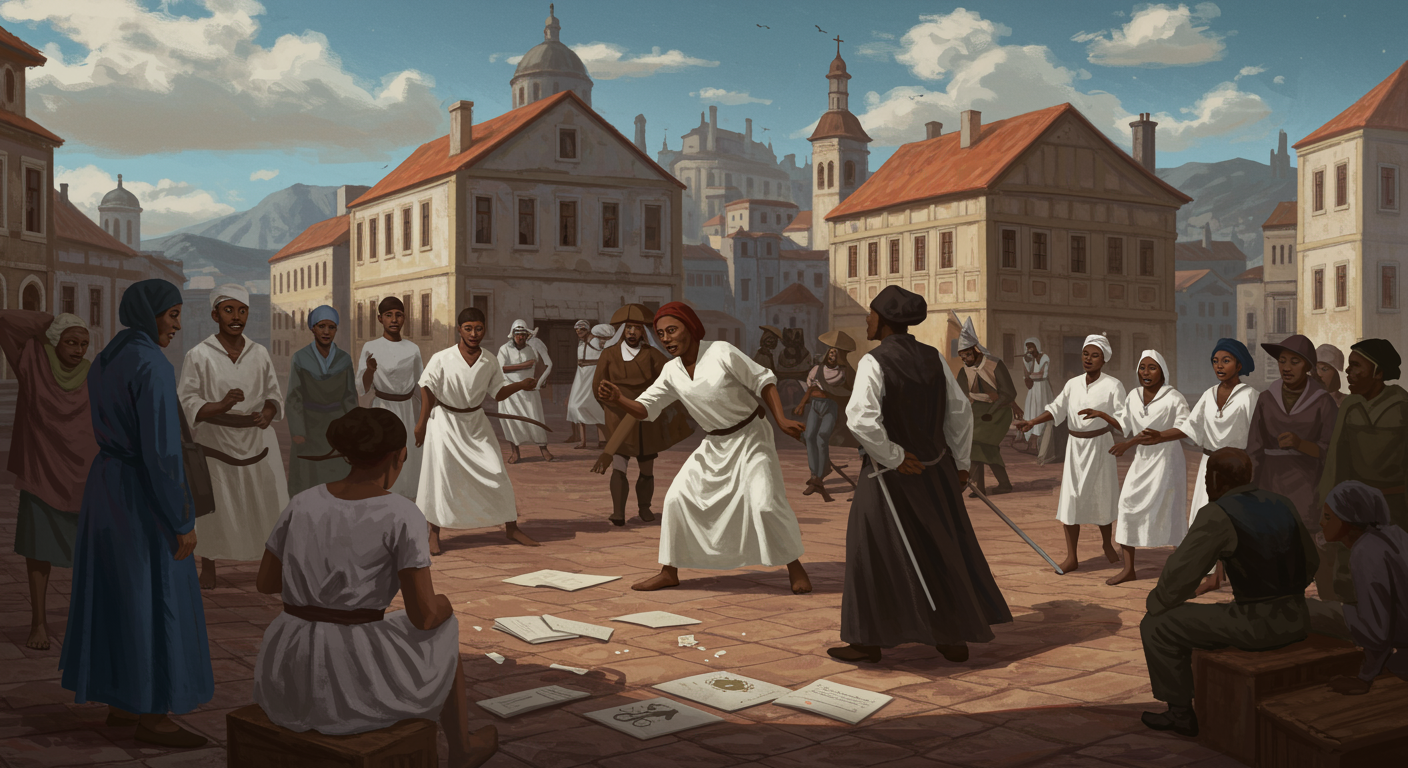
In the summer of 1518, a woman named Frau Troffea stepped into the streets of Strasbourg and began dancing. She couldn’t stop. Her movements grew frantic, her body writhing and twirling without rest. Within days, hundreds of others had joined her, dancing compulsively until their bodies gave out from sheer exhaustion. Some danced themselves to death. This isn’t a scene from a macabre novel; it’s a terrifying, unexplained phenomenon that gripped medieval and early modern Europe, often referred to as the dancing plague or St. Vitus’s Dance, an enduring historical enigma.
These bizarre outbreaks were not fleeting moments of revelry. They were involuntary episodes of intense, prolonged dancing, sometimes lasting for days on end, without rest or sustenance. Accounts describe individuals writhing, leaping, and contorting themselves in public spaces, their faces contorted in expressions of pain or ecstasy. Observers often noted participants were unresponsive to appeals to stop, trapped in a relentless rhythm their bodies seemed compelled to follow. This wasn’t a choice; it was a compulsion that consumed entire communities, leaving historians and scientists alike to grapple with a profound historical puzzle.
One of the most well-documented and devastating outbreaks occurred in Strasbourg, in what is now modern-day France, in the summer of 1518. It began with a woman known only as Frau Troffea, who stepped into the street and commenced dancing, seemingly without reason. Her solitary performance continued for nearly a week. Within a month, approximately 400 people had joined her, the streets of Strasbourg transformed into a stage for a macabre ballet. Records indicate that at its peak, the plague was claiming roughly 15 lives a day, as dancers succumbed to heart attacks, strokes, or simple exhaustion. City authorities, rather than trying to halt the phenomenon, initially attempted to “cure” it by encouraging more dancing, believing it was a fever that needed to be expelled through movement. They even built a stage and hired musicians, a decision that proved tragically counterproductive.
The medieval world was a place steeped in superstition, economic hardship, and rampant disease. Famine was a recurring specter, and the Black Death had left an indelible mark on the collective psyche. In such a climate, supernatural explanations for ailments were common. Many believed the dancing plague was a curse from St. Vitus, invoked by divine displeasure, or perhaps the work of demonic forces. Understanding this pervasive belief system is crucial, as it would have profoundly influenced how people perceived and reacted to such a widespread, bizarre malady. When the physical body began to betray reason, supernatural forces were often the first suspect.
So, what scientific explanations have been proposed for this perplexing phenomenon? One prominent theory points to ergotism, a poisoning caused by the fungus Claviceps purpurea, which infects rye and other grains. Consuming contaminated bread or cereal products could lead to two forms of ergotism: convulsive or gangrenous. Convulsive ergotism, also known as “St. Anthony’s Fire,” can induce painful spasms, tremors, hallucinations, delusions, and a crawling sensation on the skin. While these symptoms overlap with some descriptions of the dancing plague, the specific, prolonged, compulsive dancing is not a direct, universally accepted symptom of ergotism. It could certainly contribute to a state of delirium, but it doesn’t fully account for the unique characteristics of the outbreaks.
Another compelling explanation suggests mass psychogenic illness (MPI), sometimes called mass hysteria. MPI involves the rapid spread of illness symptoms among a group of people, with no apparent physical cause. It is often triggered by extreme stress, fear, or anxiety in a highly suggestible population. In the context of medieval Europe, widespread famine, disease, and the pervasive belief in divine curses or demonic possession could have created fertile ground for such a phenomenon. The sight of one person dancing uncontrollably might have triggered a similar psychological response in others, a form of social contagion spreading like wildfire. Consider how quickly panic can spread through a crowd, even without a tangible threat; similarly, a perceived affliction could propagate.
Strasbourg was not an isolated incident. Historical records detail similar outbreaks of dancing manias, albeit often on a smaller scale, in various European towns from the 14th to the 17th centuries. Aachen experienced a major outbreak in 1374, followed by others in the Netherlands and Germany. Even earlier, in 1021, a group of people reportedly danced for days outside a church in Kolbigk, leading to their collapse and deaths. While the precise details and suggested causes varied across these events, the core phenomenon (uncontrollable, prolonged, public dancing) remains strikingly consistent, emphasizing the collective nature of this mystery.
The dancing plagues stand as a powerful testament to the intricate interplay between the human body, the mind, and the social environment. Was it purely a physiological response to a natural toxin, like ergotism? Was it a profound psychological contagion born from collective stress and superstition? Or, perhaps most likely, was it a complex convergence of both, where physical distress (even minor ailments) triggered a dramatic, psychologically-driven response in a population primed for such an unexplained event by their beliefs and daily hardships? These historical accounts challenge our understanding of human endurance, collective behavior, and the often-blurred lines between physical and mental illness, leaving us to contemplate the enduring strangeness of the past.